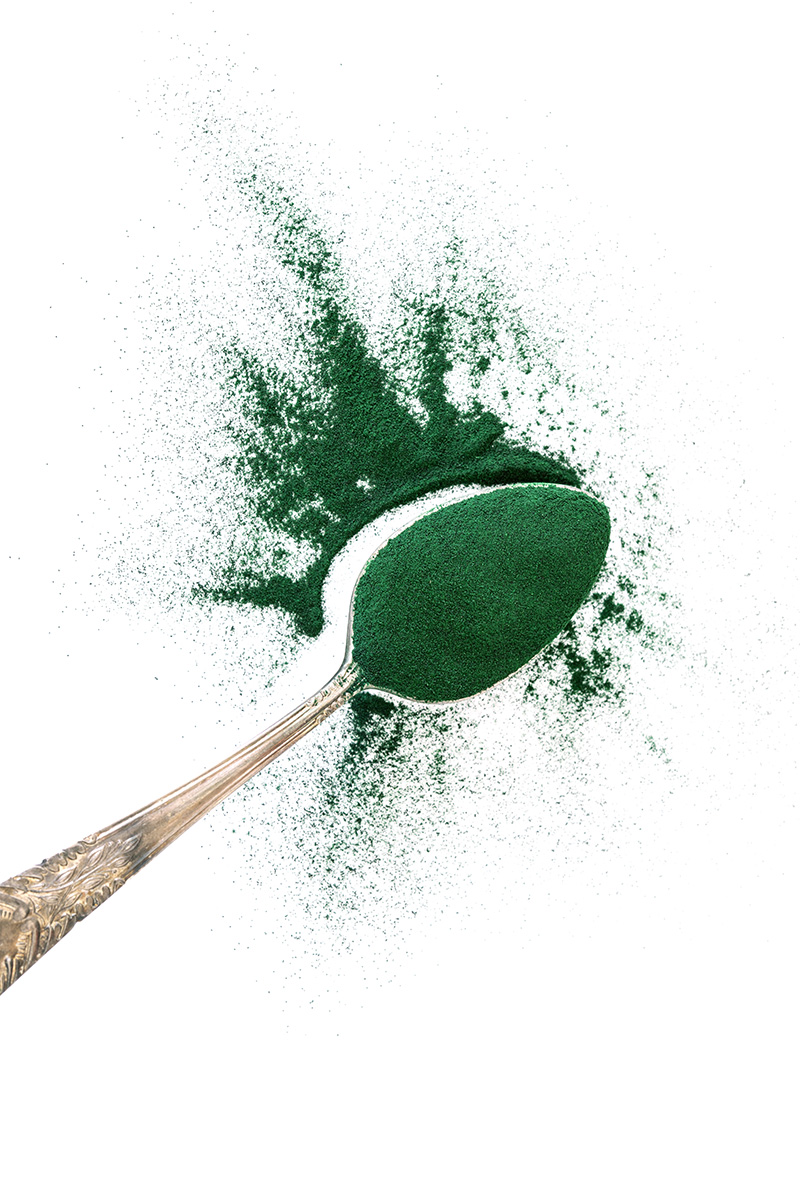Spirulina
Spirulina

What exactly is
Spirulina?
Spirulina is a single-celled photosynthetic micro-organism that originated billions of years ago by developing the ability to absorb dissolved carbon dioxide in the sea as nutrients. It is a cyanobacter or microalga that grows in highly alkaline conditions and high light intensity. Infinitely smaller than the Algae family, to which it is similar in the way it grows and develops, Spirulina is characterized by the spiral shape of its appendages, visible only under a microscope, and by the peculiarity of being able to produce proteins, essential fatty acids , vitamins and minerals from sunlight and from nutrients such as nitrates and phosphates.
The earliest records of Spirulina's use date back to the Spanish invasion of Mexico; the conquistadors noticed the Aztecs harvesting a food unknown to them from the surface of the lake. Local fishermen accumulated a blue-colored biomass in very fine mesh nets, from which they made a thick paste for food use, Techuitlatl.Legends tell that Aztec messengers used Spirulina as a source of energy during their long journeys.
Early analyses of Spirulina's nutritional characteristics showed its exceptional protein content (up to 60-70% on dry weight)characterized by high quality due to a broad and complete amino acid profile.
The lack of cellulose wall increases the digestibility of the raw product and the bioavailability of the active ingredients, which can then be efficiently assimilated or extracted.
Livegreen Spirulina has a biochemical composition that makes it a very balanced food and an ecologically excellent agent. In a CO2-producing industry such as agribusiness, the cultivation of Spirulina contrasts with the absorption of the gases produced and the natural production of O2, ending its cycle with an emerald green Carbon Footprint.
As Spirulina is grown in aquacultures instead of on land, the release of arable land and the continuous recycling of water further turns in its favor.
What does Spirulina contain?
Protein
Pivotal elements of our body, they serve to give it a healthy and strong structure, as well as contribute to satiety, thus helping us eat less;
B and E vitamins
They play a key role in the development of all the body's structures, including nerve tissue, especially in the growing years;
Beta-carotene
Has a powerful antioxidant action on the body, having a beneficial effect on eyes, teeth, nails and membranes in general;
Minerals
Potassium, magnesium, zinc and especially iron, which are essential for the general health of the body;
Phycocyanin
Protein with potent anti-inflammatory and antioxidant activities.
Omega6
Essential fatty acids that are needed to support the action of Omega3, prevent cardiovascular disease, detoxify the liver and promote cell regeneration
Livegreen Italian Spirulina is grown in large tanks located in closed greenhouses and follows several steps in its production:
Livegreen People

I fell in love with the bars because it really gives me satisfaction that right after training, often, you're hungry but you can't have lunch right away or risk eating something that can then ruin your lunch.
Francesca Lollobrigida, ice skating champion

Following such a tight and strenuous training regimen, I necessarily need to rely on supplements of various kinds. Knowing that there is a natural alternative to the more classic chemical drinks is a very important thing.
Rita Cuccuru, Sardinian paratriathlon champion

I like Spirulina because it is a natural food that allows me to easily get from my daily diet the same benefits that I would get through other non-natural supplements. The taste is absolutely pleasant and this allows me to use them very easily within my daily diet.
Laura De Marco, young star of the 3000 steeplechase


